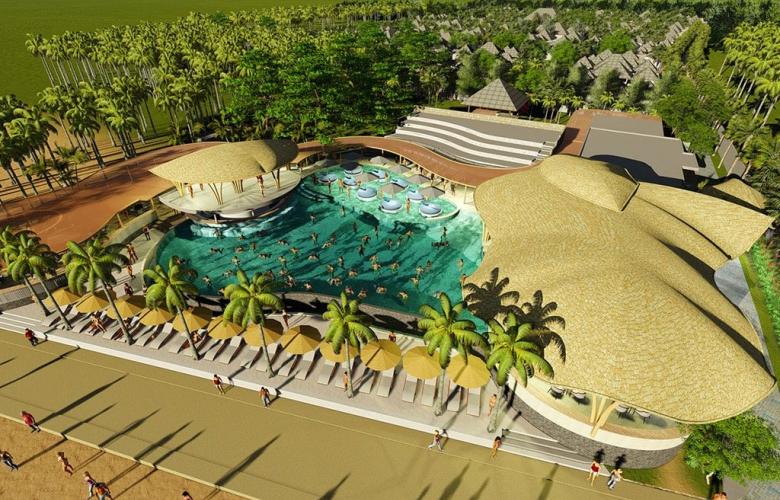Lombok is back with business as usual. Despite the devastating earthquakes, which hit North Lombok and the famous Gili Islands off the northwest coast in July and August of last year, around 90% of the islands’ tourism operations have been restored or torn down and rebuilt, and are now open again and back in business.
Running water and electricity were the first two services to be restored, and the beaches on the Gili Islands were then cleared of rubble and the streets re-paved. Most of the affected hostels, homestays, resorts and private pool villas are now nearly all fully operational and looking forward to welcoming new guests. Interestingly, the WiFi on the Gili Islands never stopped working.
Many fast-boats companies did suspend their services to the Gili Islands in the immediate aftermath of the quake, but now the fast boats between Bali and Lombok are back to normal, some have even added frequencies.

Pristine golden sands and crystal clean water at the Nautilus Villa Resort in Glil Meno, West Lombok.
Tourism infrastructure more intact
It was the simple houses of Lombok’s poor inhabitants that were hardest hit by the quake. While inadequately built structures collapsed precipitously, much of Lombok’s tourist infrastructure remained more intact than the images would suggest.
The main seaport stayed open, every harbour remained open; the airport remained fully functional and the damaged roads were swiftly repaired. There are 83-hotels in Lombok of three-star and above categories, and 763-non-star properties. Only a small percentage suffered damages of varying degrees, but none of them collapsed. The rest are intact.
For the tourism operators in North Lombok, recovery is slower than the Gili Islands, and the summit of Mount Rinjani in the centre-north of the island remains closed to trekkers for the time being.
The guides are adapting, however, and the members of the Rinjani Women’s Guide Association are now proactively promoting trips around the villages and attractions of the Senaru foothills – an area that offers many beautiful outdoor hikes for tourists.
To the immediate south of Mount Rinjani, tourism is returning to Tetebatu, an area famed for its lush rice fields and its traditional weaving and craft villages.

Artist's rendition of the Cocana Villas & Resort in Gili Trawangan.
South Lombok open as normal
Tourism businesses in the south of Lombok, with its stunningly deserted beaches, were hardly impacted by the earthquakes, and are open as normal. And while most people will have heard of Lombok’s Gili Islands, not so many visitors know there are more than three; more than 30, in fact.
None of the 'secret' southwestern Gilis – Nanggu, Tangkong, Sudat, Asahan, Gede, Ringgit or Layar, to name but a few – were affected by the quakes.
Over the last couple of decades, Lombok has repeatedly been touted as the new Bali. There are obvious parallels to its sister, 35-kilometres across the Lombok Strait, yet the two islands differ in many respects.
Why visit Lombok?
Lombok attracts travellers who seek to encounter a traditional, rural way of life. Towering mountains, mighty waterfalls, magnificent coral reefs, a colourful Sasak culture, ethnic markets, and tranquillity are among Lombok’s many charms. Pristine white sand beaches and coconut groves fringe the pearl encrusted shores, and the encompassing ocean spawns a magnificent ecosystem flourishing with the greatest marine biodiversity on the globe.

One of the most luxurious villa concepts in the northern part of Gili Trawangan, northwest coast of Lombok.
The Oberoi, Lombok, and Indonesia’s antique-filled Hotel Tugu Lombok can be enjoyed on the north coast of the mainland, while none other than David Hasselhoff is an investor in a luxury development on the island of Gili Meno.
One of the fastest growing tourism destinations
Prior to July and August 2018, Lombok was one of Indonesia’s fastest growing tourism destinations, with tourism being the island’s second largest industry after agriculture. A projected two million visitors last year should have supported a boom: not only for hotels, restaurants, dive centres, travel agents, speedboats, taxis, guides and souvenir stores but also for a thriving subsidiary economy.
Of course, hotel occupancy dropped significantly following the earthquake but it is now recovering, with Europe dominating the market. This proves that the confidence of travellers is coming back, with bookings from April onwards looking good. The infrastructure in Lombok is ready, the people are amazing and, to speed up economic recovery, the islanders deserve the support of the tourism industry.

Fabulous sunsets from from Gili T.
Siti Purba from Harcourts Purba agrees. She told WILLIAMS MEDIA "Lombok is ready. Recovery is a priority and the local population is doing all it can do to make things happen as quickly as possible, but the biggest boost to assist the recovering economy will be through tourism. Air Asia, for example are looking to make Lombok a regional hub and that is sure to bring with it more tourists and investor confidence."
Sources: eTurbo News, Oceans 5 Dive, TTG Asia, Global Expat Recruiting, Telegraph, eGlobal Travel Media
Similar to this:
ASEAN regional interest in Jakarta and Singapore round-table events
Lombok set for growth as AirAsia intends to develop new hub?
Enjoy being part of a boutique villa resort in Gili Trawangan












